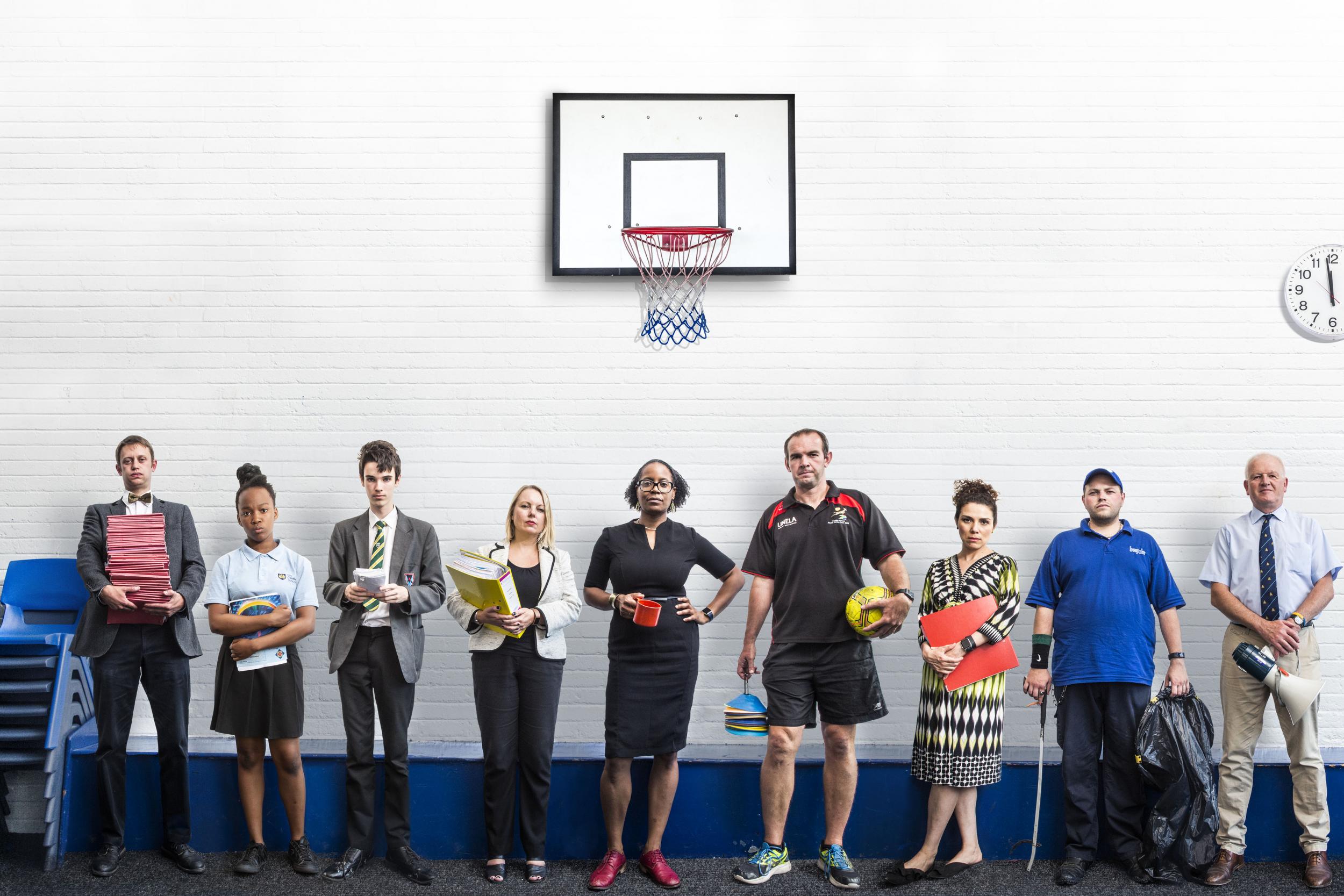School review: Educative viewing with room for improvement
New six-part documentary seeks to show ‘what’s really going on in our schools’

Unlike say, eye surgery or professional wrestling, everyone can have a properly informed opinion about schools and teachers, because, well, having all been kids, we all have the relevant experience and expertise to spout on about it, don’t we?
This includes me, so, as an obvious expert in the field of education, I was especially looking forward to School, a six-part BBC2 documentary that seeks to show “what’s really going on in our schools”.
In this case, they’ve chosen a cumbersome multi-school trust thing in south Gloucestershire, the Castle School Education Trust, and they’ve spent an academic year gathering some candid footage of staff, teachers and parents. In this first episode, they concentrate on exam-week events in a school called The Castle, which seemed appropriate, given the sense of permanent siege that pervaded the place.
The show begins with the “chief executive” telling the assembled members of the school: “We have to make our school financially viable and the standard it needs to be”, which they never did in my day, rightly. After all, it’s hardly the kids’ job to balance the books. Nor the teachers’, in fact, who show a sad, stoic resignation when yet another round of cuts are imposed on them – though no redundancies. The deputy head of PE, who should be in a tracksuit with whistle round his neck, but isn’t, remarks that morale would soon be at “rock bottom”. Mind you, teachers have been saying that since the 1970s. I wonder when they’ll know when bottom has actually hit rock?
I also scoff at the notion that any school, even a large one, would need six teaching assistants specifically tasked with pastoral care, as opposed to core education – because I always thought the teachers discharged such responsibilities themselves, often through the medium of biting, emotionally scarring sarcasm.
Chelsea, a black girl of about 12, changes our minds about that. She is racially abused and bullied by – and I don’t mind using the word – scum fellow pupils. Obviously bright, talented and ambitious, she wants to be an MI6 agent when she grows up, and good luck to her; she’ll have learnt all about betrayal and the worst of human nature at her school.
Chelsea is, she says, “blackmailed” into setting the fire alarm off, thus evacuating the entire school, which earns her a two-day suspension. It seems harsh if it really is the case that she is forced to do it, and I’d want to know more about who the bullies were. The head thinks it is a “cry for help”, after her fellow pupils suggested she go and get some “proper skin” off eBay or sod off to another school.
For whatever reason, justice is neither done nor seen to be done. Anyway, poor Chelsea certainly deserves pastoral attention, though a swift caning for the bullies would be welcome too (expert view, there).
The school is also attacked by a disgruntled pupil who covered the place in graffiti. Not tags, mind, or mimicking the simplest attempts at art by that fraud “Banksy”, but the kind of defacement that – again I draw upon extensive experience – used to feature in school textbooks in the old days. Few of the illustrations in our French language primers, for example, escaped having obscenity, defiantly in English, daubed in them, as I recall.

Watch Apple TV+ free for 7 days
New subscribers only. £8.99/mo. after free trial. Plan auto-renews until cancelled

Watch Apple TV+ free for 7 days
New subscribers only. £8.99/mo. after free trial. Plan auto-renews until cancelled
Without wishing to be indelicate, I’d say quite a bit of the graffiti at The Castle is the crude “cock and balls” line drawings you may be familiar with. These are impressively sized, yes, but poorly rendered and, in one case, the male genitalia are actually inverted, which does indeed make you wonder what’s going on in Britain’s schools, and whether the human biology module might need revision.
Just to finish the marking, “Paedo” is spelt “Pedo”, predictably enough, but they manage to get the letters of “shithole” in the right order, which is probably enough for a C grade at GCSE English these days.
The teachers are hard-pressed and hardworking, but sometimes infuriatingly wet. In one ridiculous gesture, the form master of 11G, his voice catching, reads out a letter to his departing pupils, in which he declares he had watched them “mature into wonderful young adults”. He does so in front of – yes – another “cock and balls” that has been felt-tipped on to a school shirt as some sort of end-of-term jape. As with handwriting, the unique features of a “cock and balls” drawing could, through forensic analysis, reveal the identity of the perpetrator of the graffiti attack: the obvious opportunity isn’t taken up.
Educative viewing, then, but plenty of room for improvement at the school: Beta plus for effort.
Join our commenting forum
Join thought-provoking conversations, follow other Independent readers and see their replies
Comments